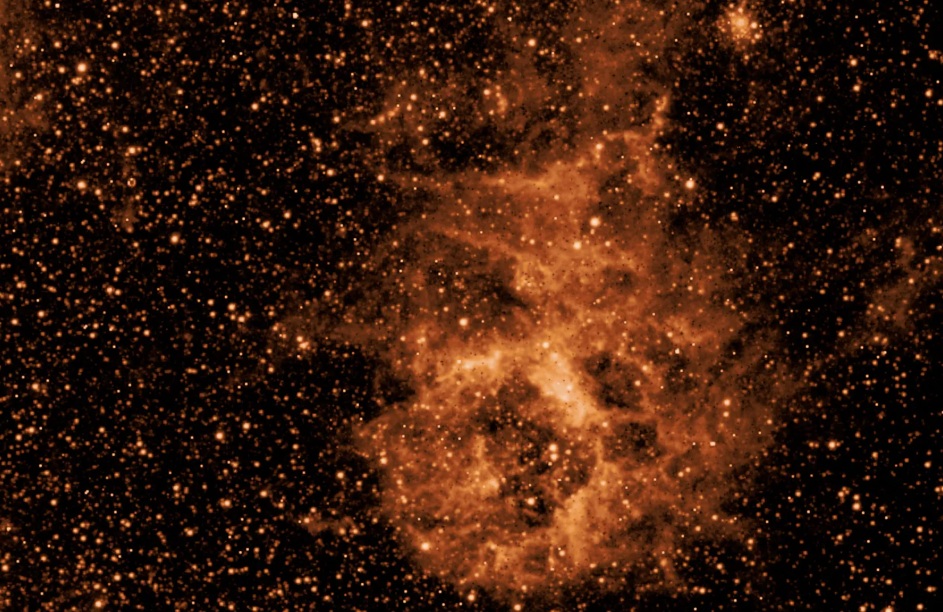A new observatory begins its science mission, to create a unique all-sky map of space and time.
A new space mission is open for business. Last week, we got a look at science images from NASA's SPHEREx (Spectro-Photometer for the History of the Universe, Epoch of Re-ionization, and Ices Explorer) mission. The mission will now begin science operations, taking 3,600 unique images a day in an effort to create a 3D map of the sky.
The beginning of the science phase of operations comes after a one month period of calibration and commissioning for the spacecraft and its instruments. SPHEREx launched on a SpaceX Falcon-9 rocket from Vandenberg Space Force Base earlier this year on March 12^th^. The mission was part of a tandem launch, along with the PUNCH (Polarimeter to Unify the Corona and Heliosphere) coronagraph solar wind quartet of satellites.
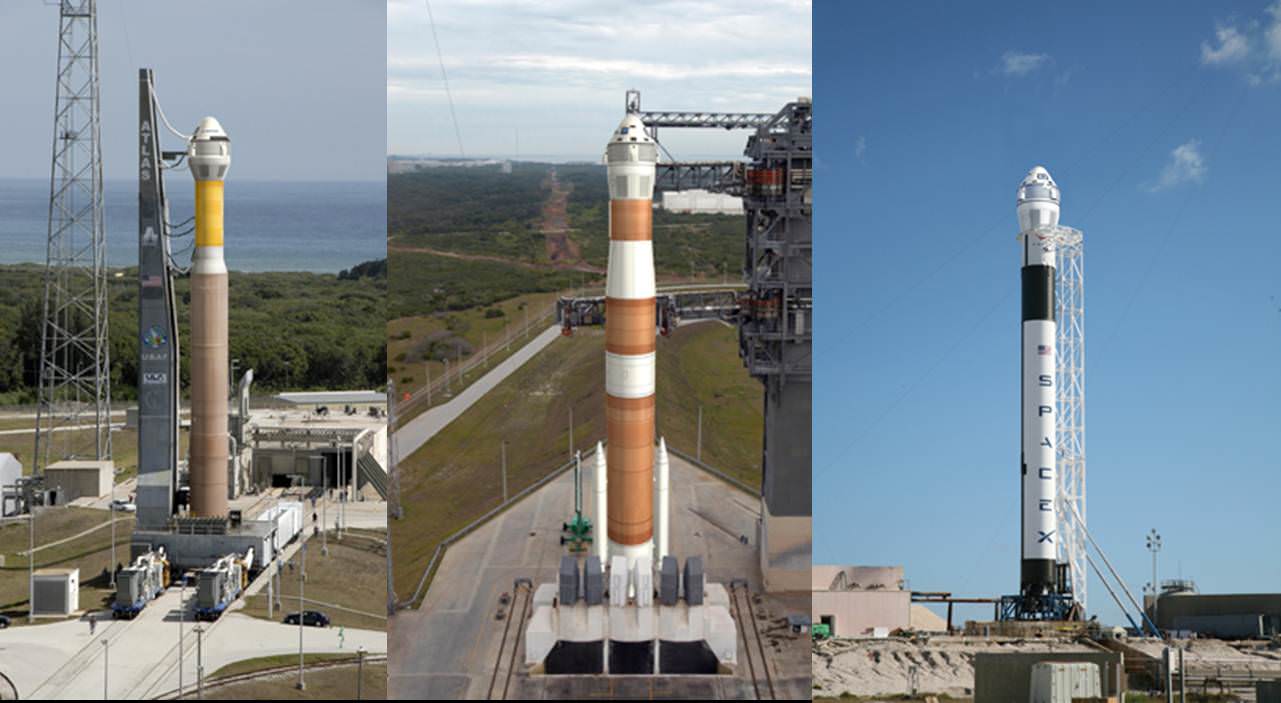 The launch of SPHEREx and PUNCH. Credit: NASA/Jim Ross.
The launch of SPHEREx and PUNCH. Credit: NASA/Jim Ross.
In a 90 minute sun-synchronous orbit,SPHEREx is able to scan the entire sky, one 4.5 degree wide swath at a time. This unique orbit also allows the mission to continuously keep its solar panels pointing sunward, while the optics are kept cool in the shade and pointing in the opposite direction.
"The SPHEREx instrument and spacecraft are performing well," James Bock (NASA-JPL) told*Universe Today*. "Generally, both are doing a bit better than our pre-flight expectations, and exceeding our scientific requirements. Speciffically, we have hit our targets on the telescope and focal plane temperatures (62 and 45 Kelvin), instrument noise, telescope focus, and point source sensitivity. The spacecraft pointing and slew performance are both excellent. We do observe some emission from the upper atmosphere of the Earth, most prominently to 1.083 µm (micrometer) line from Helium seen in the first light images."
SPHEREx has three main objectives:
First, the mission aims to measure the amount of ices (water, methanol, and carbon dioxide and monoxide ice) present in molecular dust clouds. The next objective is to observe the brightness of the extra-galactic background in an effort to trace galactic evolution over time. The final primary goal of the mission is to complete a large scale, 3-dimensional survey of galaxy positions to help understand the role of inflation in the early Universe. Specifically, by mapping out the precise motion and position of millions of galaxies today, researchers hope to reveal what happened in the past, all the way back to the moment of cosmic inflation when the Universe expanded a trillion-trillion fold in a short period of time. Much like the Cosmic Microwave Background, it's thought that what happened in the past could have left a fingerprint on the modern Universe at other wavelengths, including the infrared.
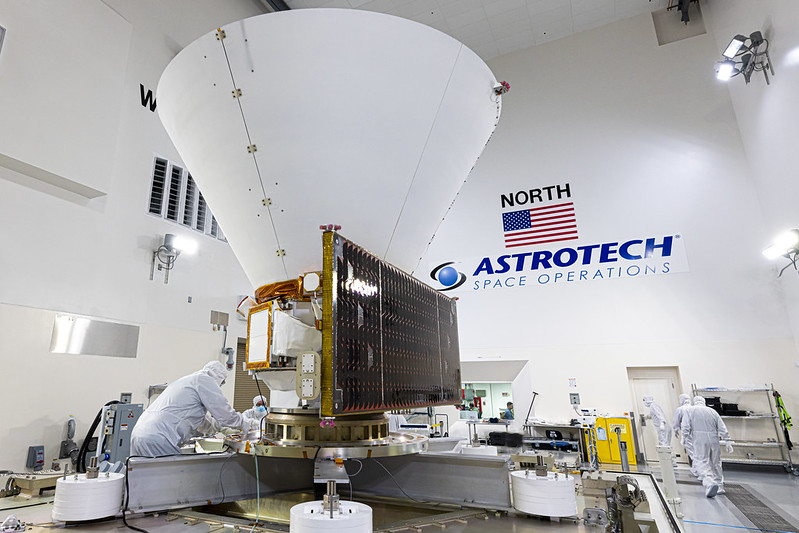 SPHEREx in the clean room ahead of launch. Credit:BAE Systems/Benjamin Fry.
SPHEREx in the clean room ahead of launch. Credit:BAE Systems/Benjamin Fry.
To this end, SPHEREx will use its six multi-spectral instruments working across the 0.75 to 5.0 micrometer bands. Fixed in place, SPHEREx relies instead on reaction wheels aboard the spacecraft to slew to a new position in the sky. SPHEREx will be the first mission to span the entire sky across 102 separate wavelengths of infrared light.
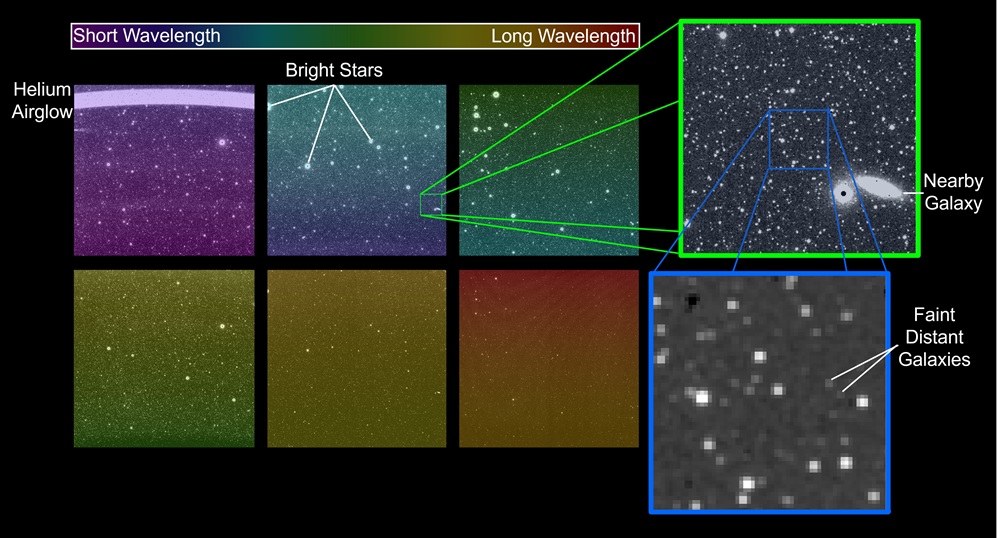 An early 'six series' calibration image for SPHEREx from first light in early April, showing the multi-spectral capabilities of the observatory in action. Credit:NASA/JPL-Caltech.
An early 'six series' calibration image for SPHEREx from first light in early April, showing the multi-spectral capabilities of the observatory in action. Credit:NASA/JPL-Caltech.
The mission is expected to study more than 100 million stars in our Milky Way galaxy, and over 450 million galaxies beyond our own.
What the first science images show are the result of scans across the Large Magellanic Cloud satellite galaxy, and the NGC 1763 star cluster nearby in the constellation Dorado. In each sequence, SPHEREx snaps six simultaneous images across the infrared spectral regime… and does this 3,600 times (600 times for each of the six detectors) a day. The released image shows how a 3.29 micron image filled with molecular dust, while another allows researchers to peer through the haze at 0.98 microns and reveal polycyclic aromatic hydrocarbons.
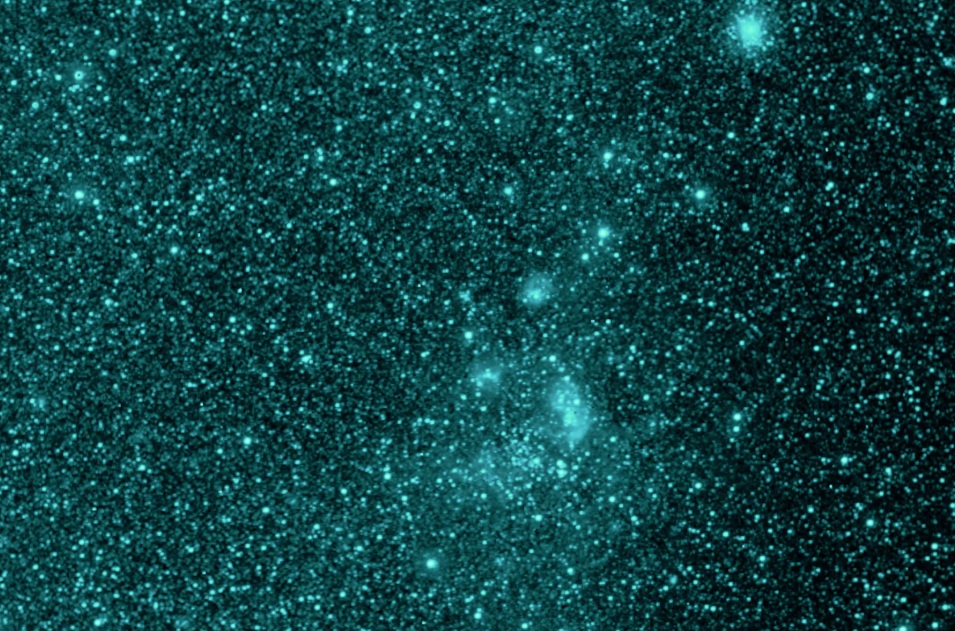 *The same cluster NGC 1763 (see lead image) at 0.98 microns. Credit: NASA/JPL-Caltech*
*The same cluster NGC 1763 (see lead image) at 0.98 microns. Credit: NASA/JPL-Caltech*
What's Next for SPHEREx
And this is just a small example of what we expect SPHEREx to do. Now, SPHEREx begins science operations, completing over 11,000 orbits from north-to-south over the next 25 months.
SPHEREx will also bridge the gap between JWST and the Nancy Grace Roman Space Telescope which is set to launch in late 2026… if it can navigate now uncertain budgetary waters.
"We're going to study what happened on the smallest size scales in the Universe's earliest moments by looking at the modern Universe on the largest scales," says Jim Fanson (NASA/JPL) in a recent press release. I think there's a poetic arc to that.
Infrared astronomy is were it's at, and SPHEREx promises to answer some key riddles in the field.
 Universe Today
Universe Today
